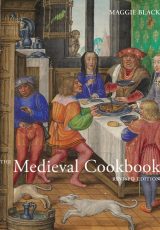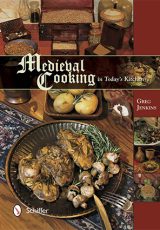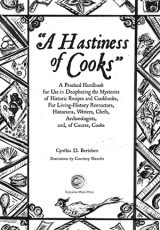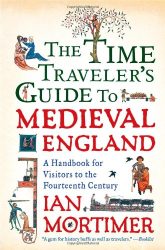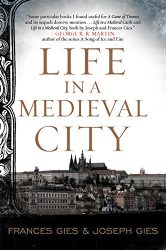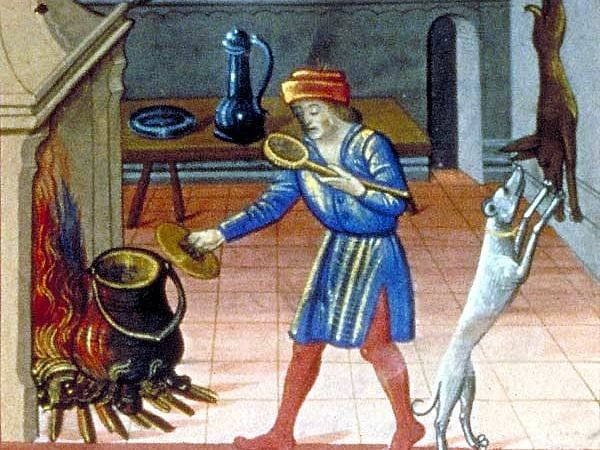
Medieval Cooks usually prepared their food over an open fire. They sometimes shared communal ovens for everyone on the premises of a town (only later castles and noble houses had stoves and ovens of the own).
The basic food of the Middle Ages was bread, ground at the lord’s own mills. Medieval people also ate chickens, geese, ducks, beef, venison, and pork. One of the favourite ingredients was mustard. Salt, however, was usually too expensive for most to afford.
Life of a Medieval Cook
Cooks that worked in the royal kitchens lived in the castle or in small villages close to it. They were in charge of preparing meals, cleaning the kitchen, and learning the family’s favourite recipes by heart.
The kitchen usually had a fireplace or central open hearth and stone floors. By placing the open hearth in the middle of the main living area, the room could make efficient use of the heat. Even in wealthy households, the kitchen was usually the Late Middle Ages that a separate kitchen area began to evolve. This way, the smoke, odors and bustle of the kitchen could be kept out of sight of guests.
Among the main tools were knives, iron cauldrons and pots, oven, wooden spoons, pothangers, dishes, pans, and platters. Many of these are still available today, save for cranes with adjustable hooks so that pots and cauldrons could be swung away from the fire to keep them from burning or boiling over.
Cooks wore clean clothes and an apron made of wool. The kitchen staff large noble or royal courts occasionally numbered in the hundreds including pantlers, bakers, waferers, sauciers, larderers, butchers, carvers, page boys, milkmaids, butlers and scullions. They were generally regarded as important members of society.
Cooking in the Middle Ages
Food preservation techniques and slow transportation made long-distance trading of ingredients difficult. The nobility had access to more foreign options like exotic spices and expensive imports, while decrees outlawed the consumption of certain foods among certain social classes. manual labour, medieval people believed, required coarser, cheaper food.
From the 12th century on, innovations in international trade and foreign wars gradually disseminated new food choices through the upper-middle classes. For example, verjuice, wine and vinegar, black pepper, saffron and ginger.
The first medieval coking books appeared in the 13th century. With the exception of a few regional differences, recipes were usually common to the whole of Europe. The elite classes had similar tastes in cuisine.
Learn more: Medieval Cuisine & Recipes
- Learn more: Medieval Cuisine: What Did People Eat in the Middle Ages?
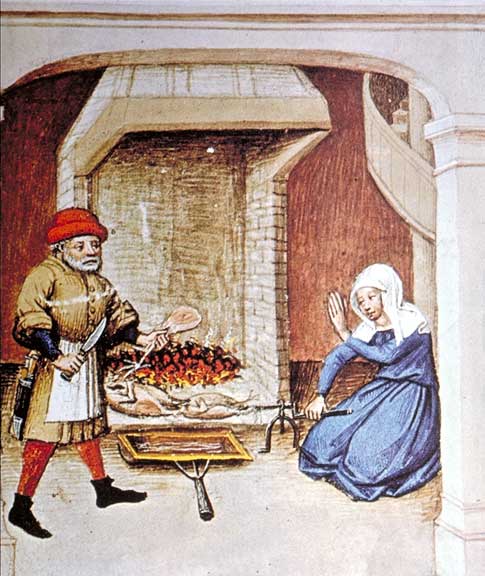
Medieval Ingredients
Staple Foods
Bakers and their bread were at the heart of the medieval diet. Cereals also remained a staple in the early middle Ages, until the introduction of rice and later potato (used first exclusively to feed animals). The poor ate barley, oat, and rye. The governing classes wheat. Bread, porridge, gruel, pasta, fava beans, and vegeatables were eaten by all members of society.
Birds, Fish and Meat
Chickens, geese, and ducks were common. On special occasions, the wealthy would also have swan and peacock. Also well-liked were beef, venison, and pork. Meat was more expensive, so game was often seen on the tables of the nobility and poachers. Popular fish included cod and herring, dried, smoked, and salted to make their way far inland.
Fruit
For the upper classes, fruit was usually served in pies or preserved in honey. Medieval people weren’t aware of nutrition, vitamins, or fibre – so fresh fruit was more of a poor people choice. During the Middle Ages, popular fruits included apples, oranges, lemons, apricots, peaches, cherries, berries, and melons. Crusaders later introduced raisins, dates, and figs to Europe.
Ingredients
Mustard was one of the medieval people’s favourite ingredients. Honey was also, for many years, the only way to sweeten food – spices came from the Far East and were expensive.
Books about Medieval Life
More Medieval Occupations

Medieval Minstrel
Medieval minstrels sang, played musical instruments, and told engaging stories. Here’s what life was like for a minstrel in the Middle Ages.
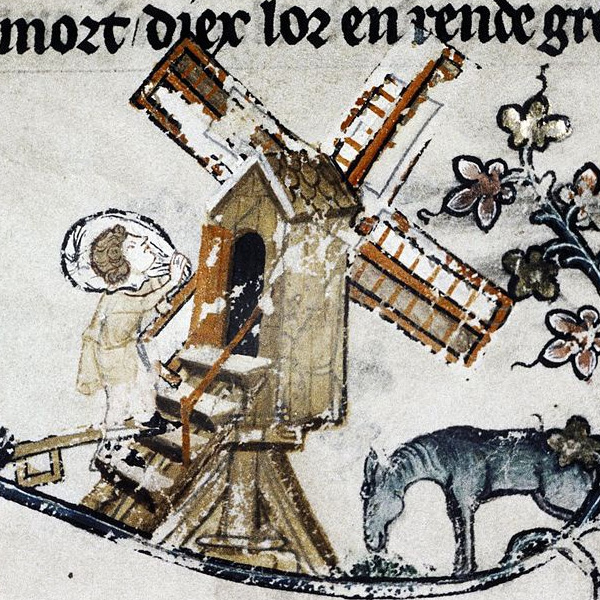
Medieval Miller
Millers were some of the most important tradesmen in the Middle Ages. Learn more about this medieval profession and how millers lived.
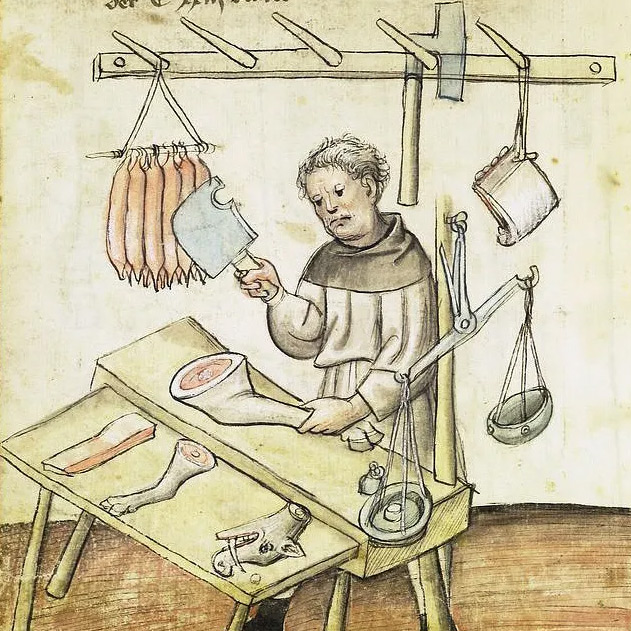
Medieval Butcher
Middle Ages butchers prepared meat, fish, and fowl for the people in a castle or a city. They sometimes had stalls in a marketplace.
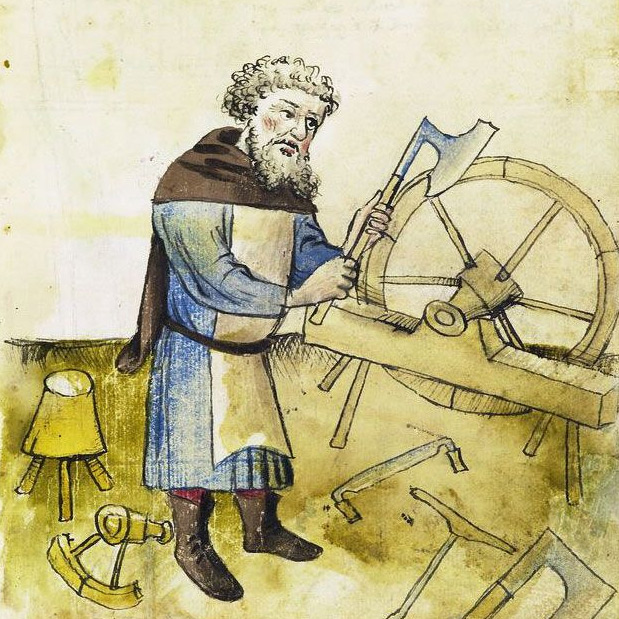
Medieval Wheelwright
Medieval candlemakers made candles from materials such as fat, tallow and beeswax.

Medieval Shoemaker
Medieval candlemakers made candles from materials such as fat, tallow and beeswax.
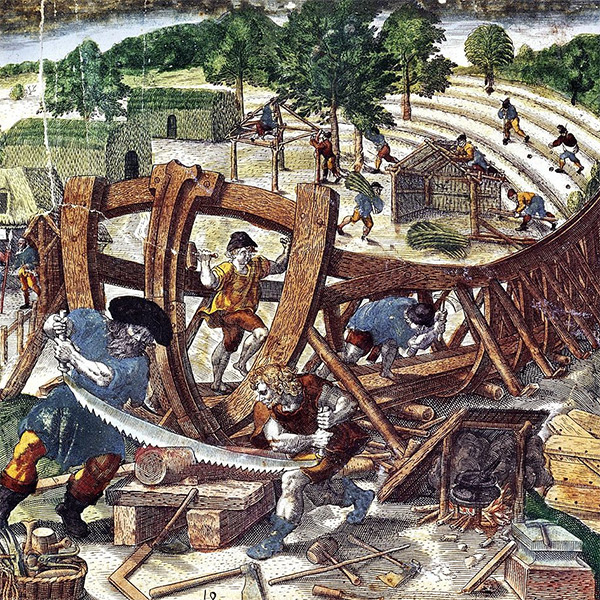
Medieval Shipwrights and Shipmaking
Being a sailor in the middle ages meant living a lonely and difficult life, as they would often set sail for months or even a year at a time.

